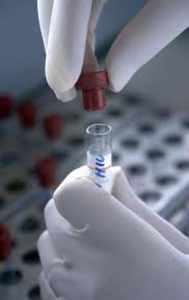Ron Hines DVM PhD
 See What Normal Blood & Urine Values Are
See What Normal Blood & Urine Values Are
 Causes Of Most Abnormal Blood & Urine Tests
Causes Of Most Abnormal Blood & Urine Tests
The Osmolality Or Concentration Of Your Pet’s Blood (The difference between osmolarity and osmolality are insignificant)
Your dog and cat’s blood osmolality value tells your veterinarian if the concentration of dissolved particles within its blood is elevated, normal or low.
The blood of all living things must stay very uniform in its concentration of dissolved ingredients. Your dog or cat’s blood osmolality is determined by a simple mathematical formula that uses the concentration of dissolved sodium (Na+) glucose and blood urea nitrogen (BUN) found in a set volume of your pet’s blood.
Basically, it tells your veterinarian if your dog or cat’s blood is too concentrated, just right or too dilute. In healthy pets, their kidney’s job is to keep the concentration of the blood’s dissolved ingredients under tight control. It does this by conserving water when its blood becomes too concentrated or removing excess water from the blood (and into the urine) when blood is too dilute.
This occurs in relation to the amount of ADH (anti-diuretic hormone) the pet’s hypothalamic region of its brain releases as it constantly monitors the body’s hydration. If your pet’s osmolality wanders outside its normal range, cells throughout its body will not function properly or maintain their normal shape. (there is a minor difference between blood osmolality and blood osmolarity, but it is not worth pondering over.)
In addition, your dog and cat’s kidneys actively conserve or excrete electrolytes, the dissolved blood mineral elements that contribute to osmolarity, depending on the need.
Knowing your pet’s blood osmolality (either by calculating it or observing its blood Na, K+, Cl- and BUN levels) is critical for your veterinarian in deciding the proper ingredients to add to IV fluids your vet will give in emergency, life-threatening situations.
Reasons Why Your Dog Or Cat’s Osmolarity Values Might Be Elevated (Hyperosmolality, Hypertonic Blood):
The most common cause of hyperosmolality is in both dogs and cats is dehydration. That can be due to fluid loss due to diarrhea, vomiting, fever or a refusal or inability to drink.
A much rarer cause is a rare form of diabetes (D. insipidus) where the hormone (ADH/ =vasopressin) that instructs the kidneys on water conservation is lacking. That brain stem messenger is stored in your pet’s pituitary gland. (read here)
Occasionally blood osmolality will go up in ordinary diabetes in your dog or in your cat too due to very high blood sugar (glucose) levels or due to failing kidneys that allow blood urea levels to become too high or due to too high a sodium level in the pet’s blood (hypernatremia),
Your pet’s blood osmolarity can also be elevated in antifreeze (ethylene glycol), methanol, manitol, grain alcohol and other poisonings. But that won’t be reported if its blood osmolarity was determined based on it blood Na, Glucose and BUN values as it usually is. To reveal those causes, an osmolal gap test needs to be run.
Reasons Why Your Pet’s Osmolarity Values Might Be Low (Hypo-osmolality, Hypotonic Blood):
Too much water in your pet’s body – as could occur when excessive or unbalanced IV fluids were given – can result in low blood osmolality. Five percent dextrose solution (D5W) is essentially pure water since the dextrose in it is quickly metabolized (used up). Too much or too fast an infusion of Ringer’s solution is even capable of lowering blood osmolality. Both are situations that can result in life-threatening cerebral edema.
Excessive corticosteroid medications or too little sodium and potassium in the blood (hyponatremia, hypokalemia) as occasionally occurs on high doses of diuretics (e.g. furosemide/Lasix®) can both lower your dog and cat’s blood osmolality.
Any health condition that can cause water retention, such as heart failure or liver failure, bacterial endotoxin release or prostaglandins that impair kidney function can also cause osmolality reading to be low.
Complementary Tests:
Urinalysis including urine specific gravity (isosthenuric values – that is specific gravity no different from your pet’s blood serum as evidence of kidney disease) CBC/ WBC and blood chemistry values, further tests chosen by your veterinarian based on those findings
DxMe



